From October 29 – November 11, 2024, the UBC Education Library Collection Spotlight will feature Remembrance Day books and books about war.
Here are just a few titles that will be displayed:
1. Remembrance Day: “Lest we forget” / Jill Foran
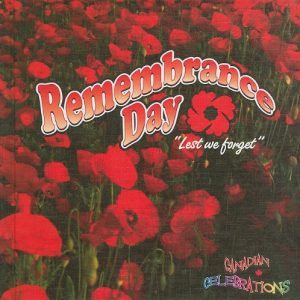
“Canadian Celebrations provides an exciting look at the events that people take part in during Canada’s major holidays. Each title provides information about the history, symbols, and traditions of these special days.”
2. In Flanders Fields: the story of the poem by John McCrae / Linda Granfield; [illustrated by] Janet Wilson; with an introduction by Dr. Tim Cook.
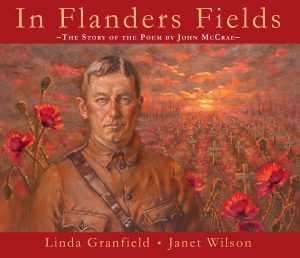
“In this award-winning book, the lines of the celebrated poem are interwoven with fascinating information about the First World War (1914-1918) and details of daily life in the trenches in Europe. Also included are accounts of McCrae’s experience in his field hospital and the circumstances that led to the writing of “In Flanders Fields.”
3. On Remembrance Day By Eleanor Creasey
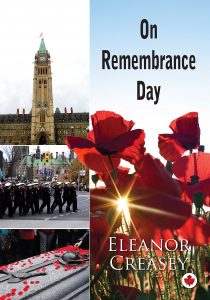
Online link
Permalink book at Education Library
An exploration of Canadian Remembrance Day history, customs, and traditions. Who are the people who offered their lives in war? Why do we remember them? How do we honour their memory?
For children learning about remembrance and the human toll of war, there can be hard questions to answer. This book is meant to answer the questions kids ask about Remembrance Day and to explain how and why we honour the men and women who have served our country. Canada has developed unique ways of honouring and demonstrating respect for its war dead and veterans.
Through every generation there are Canadian families who have lost loved ones to international conflict and war. On Remembrance Day presents the origins, traditions, and customs of Canada’s Remembrance Day in a fashion that is engaging and easy to read.
4. Remembrance Day / Molly Aloian

“Each year on November 11th, millions of people in Canada and other countries in the Commonwealth take time to remember the men and women who served their countries during times of war. This book describes how people around the world hold similar services featuring poppies, poems, and special prayers.”
5. Un coquelicot pour se souvenir / Heather Patterson ; [illustrations] Ron Lightburn ; text français de Claudine Azoulay
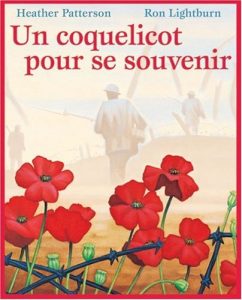
Un po’me sur l’espoir qu’inspire le coquelicot, qui s’?panouit l? o? la guerre a d’cim? tant d’humains. Ce po’me est le point de d’part d’une vaste campagne qui vise ? aider les victimes de la guerre, tout en rappelant aux autres combien il a fallu de courage pour survivre ? cette p’riode troubl’e.
Moving text coupled with stunning illustrations by Governor General’s Award-winning artist Ron Lightburn explain the symbolism behind the poppy.
A bonus for teachers is the five-page spread all about the poem, “In Flanders Fields,” Canada’s wartime and peacekeeping endeavours, and the adoption of the poppy as our Remembrance Day emblem.
6. A poppy is to remember / Heather Patterson ; [illustrations] Ron Lightburn.
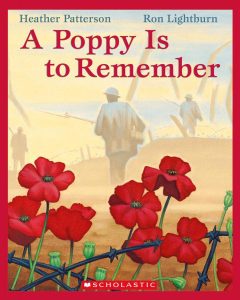
“With soothing words and illustrations aimed specifically at younger readers, children will learn how the bright red poppy became the symbol for honouring those who fought for freedom.
The text is simple and is combined with stunning paintings by award-winning illustrator Ron Lightburn. The familiar poem, “In Flanders Fields,” is included, along with information about the symbolism and history of the poppy and Remembrance Day – all geared towards helping parents and teachers explain the significance of past and present wars and Canada’s peacekeeping missions.”
7. Remembrance Day / Liz Gogerly

Looking back at the First and Second World Wars, this book investigates the origins of Remembrance Day, and how its significance has grown to incorporate conflicts up to the present day. Explaining why we wear poppies, the book goes on to explore what Remembrance Day means for people today and describes the work of the British Legion.
8. Proud as a peacock, brave as a lion / Jane Barclay; illustrated by Renné Benoit

“Much has been written about war and remembrance, but very little of it has been for young children. As questions come from a young grandchild, his grandpa talks about how, as a very young man, he was as proud as a peacock in uniform, busy as a beaver on his Atlantic crossing, and brave as a lion charging into battle”.
9. Jules et Jim. English
The eleventh hour / Jacques Goldstyn.
“Jules and Jim are best friends. They play together. They go to school together. They grow up together. Through it all, Jim is always a little ahead of Jules-a little faster, a little stronger. So, when Canada goes to war against Germany in 1914, Jim is the first to volunteer, but Jules is right behind him. They fight together. They battle the cold and the mud of the trenches together. But in the end, only one of them will see the Armistice begin at the eleventh hour of the eleventh day of the eleventh month. A poignant tale of friendship, The Eleventh Hour is also a story about life, death, and the horrors and futility of war.”– Provided by publisher.
